BLOIS
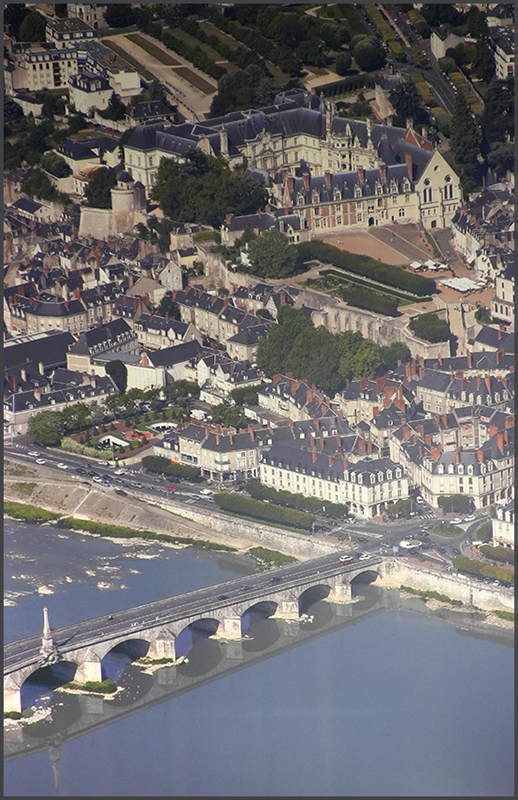
Photo from a poster, gives a nice idea of the layout and location
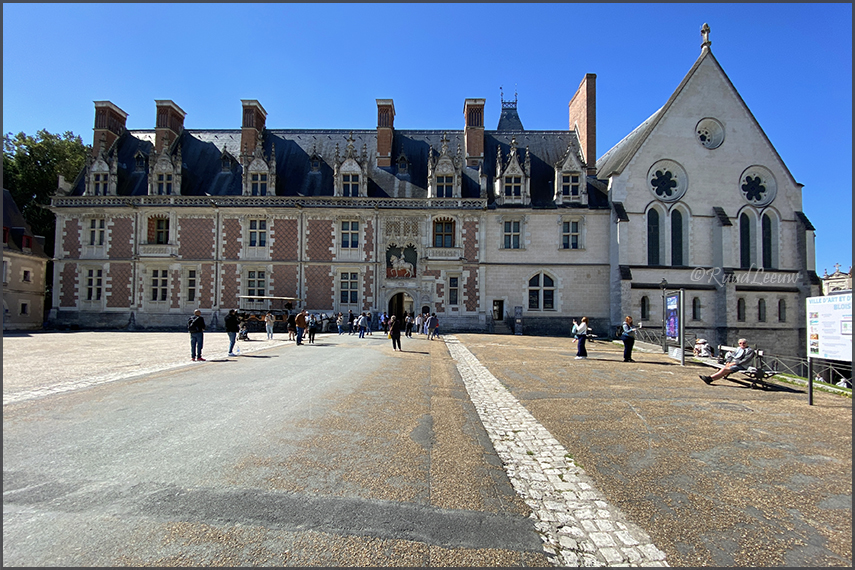
Historically, the city was the capital of the County of Blois, created on 832 until its integration into the Royal domain in 1498, when Count Louis II of Orléans became King Louis XII of France.
During the Renaissance, Blois was the official residence of the King of France.
Since 2013, excavations have been conducted by French National Institute of Preventive Archaeological Research (INRAP in French) in Vienne where they found evidence of "one or several camps of late Prehistory hunter-gatherers, who were also fishermen since fishing traps were found there. They were ancestors of the famous Neolithic farmer-herders, who were present in current France around 6.000 BCE.
When Hugh the Great became duke of the Franks, he left the title of count to his faithful vassal, Theobald I of Blois (circa 940). His descendants, known as 'Thibaldians', remained as Counts up until the county became a royal possession in 1397.
The House of Blois also succeeded in raising some of its members or descendants to the highest levels of the European nobility, notably by acceding to the thrones of France, England, Navarre, Spain and Portugal.
In 1196, Count Louis I of Blois granted privileges to the townsmen; a commune, which survived throughout the Middle Ages, probably dates from this time. The counts of the Châtillon dynastic line resided at Blois more often than their predecessors, and the oldest parts of the Château of Blois (from the 13th century) were built by them.
en.wikipedia.org:_Château_of_Blois
en.wikipedia.org:_Blois
|
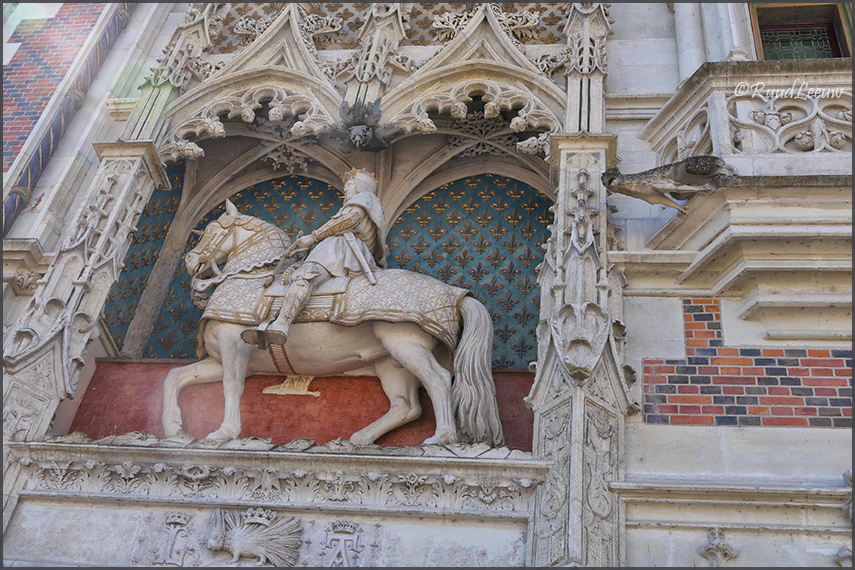
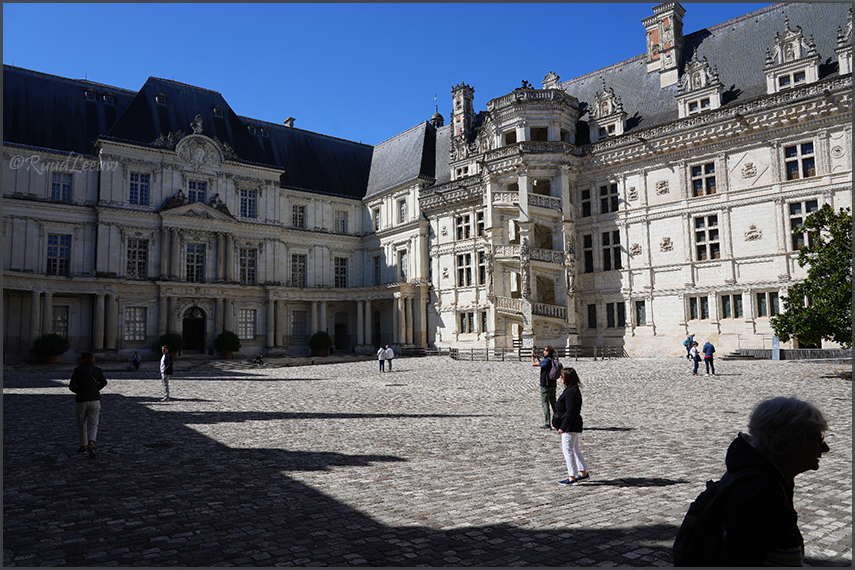
The Royal Château of Blois is a castle located in the city center of Blois, Loir-et-Cher, in the Loire Valley, France. In addition to having been the residence of the Counts of Blois and some French kings, Joan of Arc also went there by 1429 to be blessed by the Archbishop of Reims before departing with her army to drive against the English, who conquered Orléans the previous year.
The château effectively controlled the County of Blois up to 1397, then the Duchy of Orléans, and the Kingdom of France between 1498 and 1544.
It comprises several buildings, whose construction began in the 13th century and ended in the 17th century.
Four different architectural styles are represented within the rectangular edifice, including: some remainings of the 13th-century medieval fortress, the Louis XII Gothic-style wing, the Francis I Renaissance-style wing, and the Gaston of Orléans Classical-style wing. In total, there are 564 rooms, including 100 bedrooms with a fireplace in each, and 75 staircases (although only 23 were used frequently). [¬ Wikipedia] |
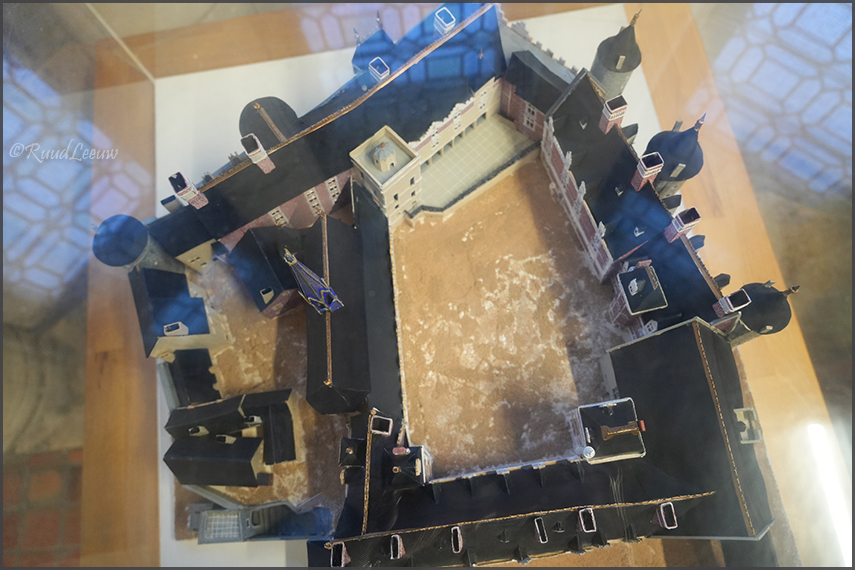
The central staircase is quite a dominant feature
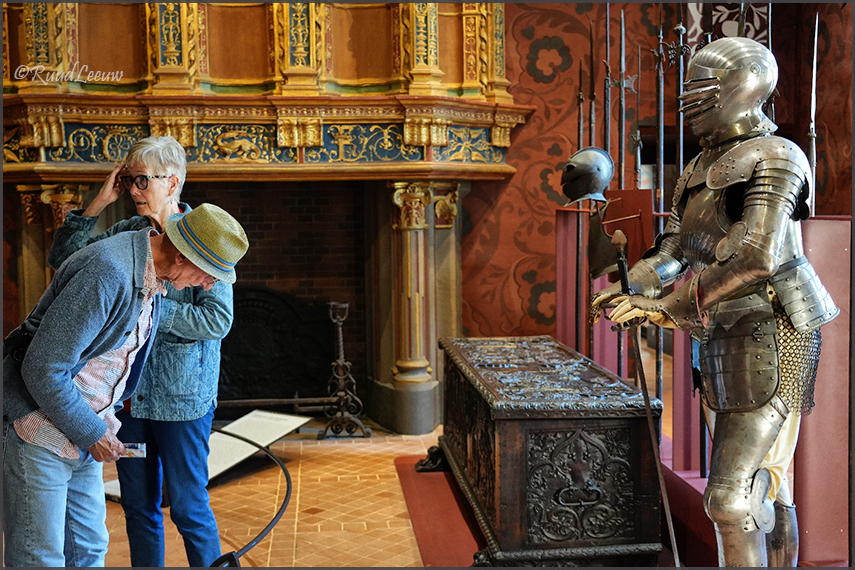
I love the armoury in thse castles! Takes me back to the days of Ivanhoe!
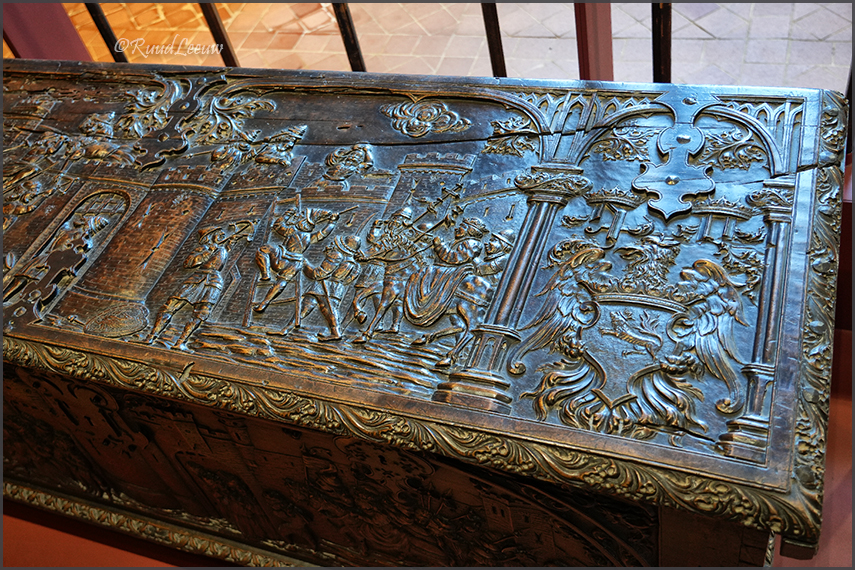
The 'suitcases' for travelling in medieval times and before, transported on ox carts, handled by strong men
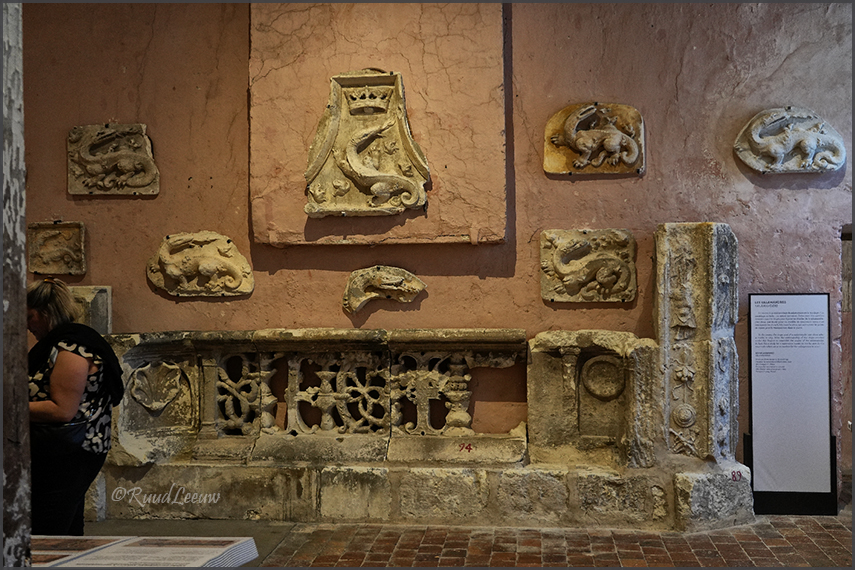


Gargoyles
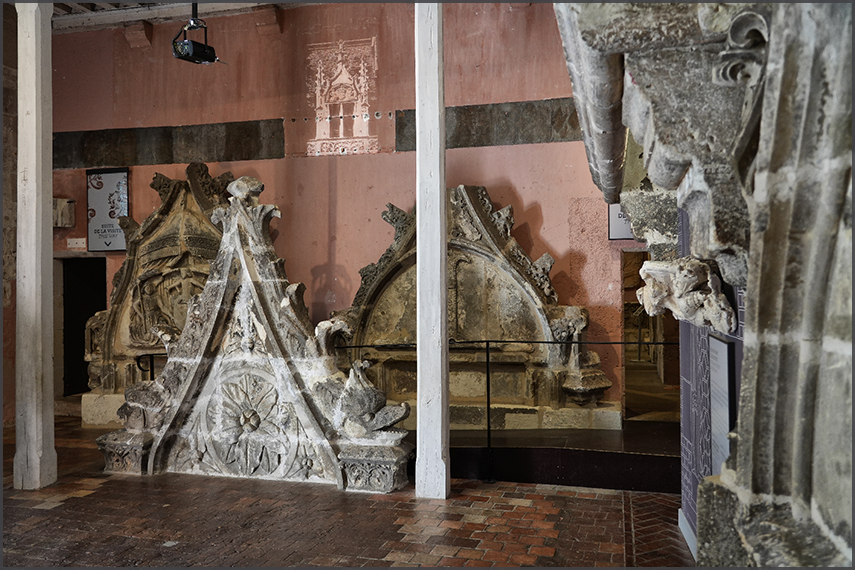
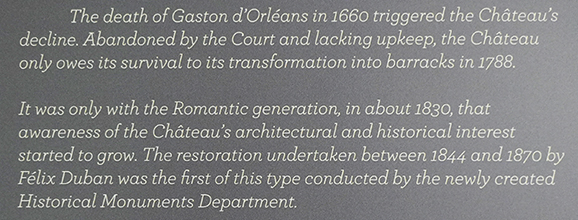
The death of Gaston d'Orléans
in 1660 triggered the Château's decline.
The restoration undertaken between 1844 -1870 by Félix Duban was the first of this type
conducted by the newly created Historical Monuments Department.
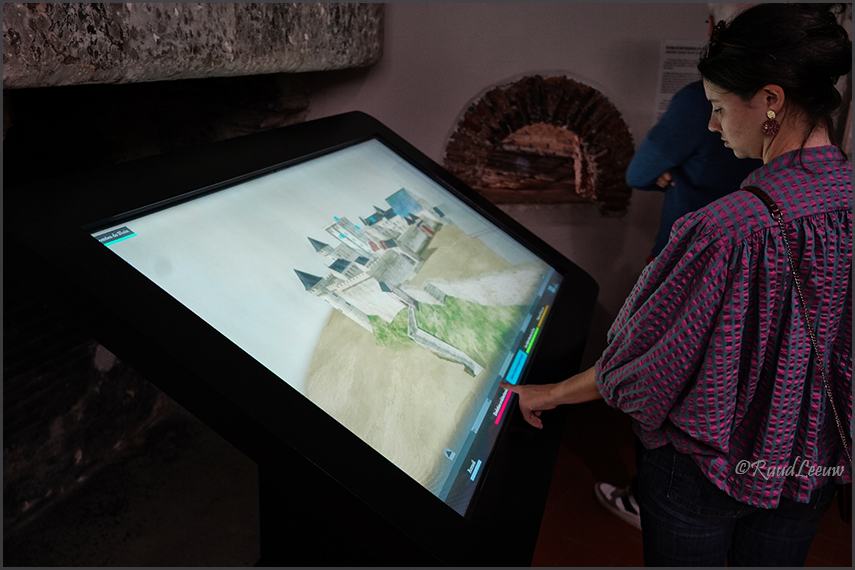
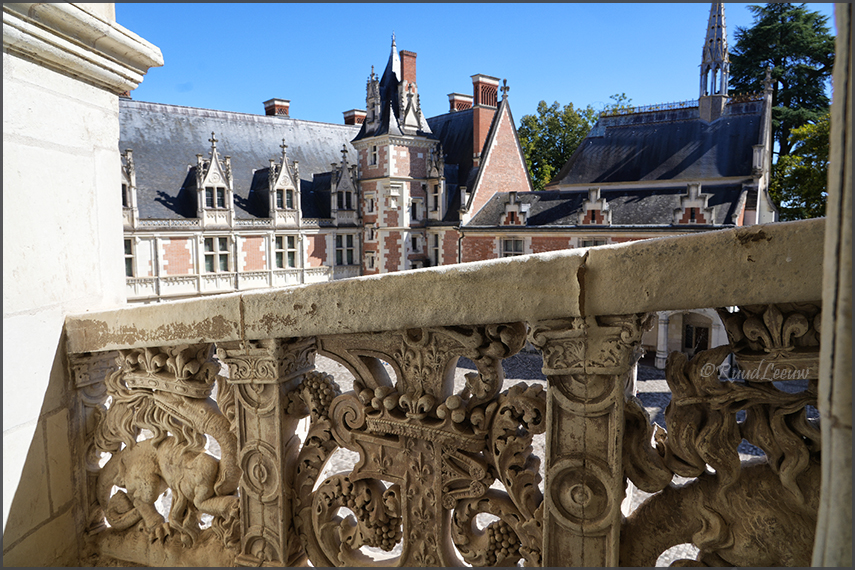
The staircase with the elaborate carvings, including the salamander (it's everywhere!)
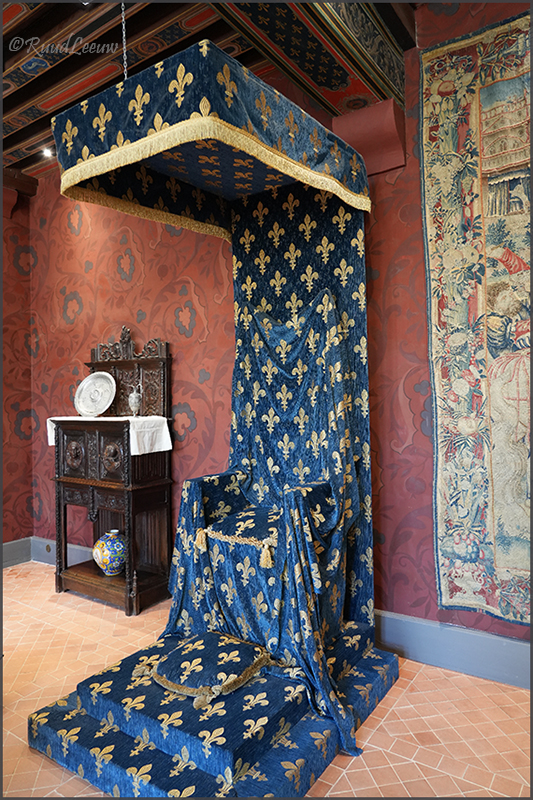
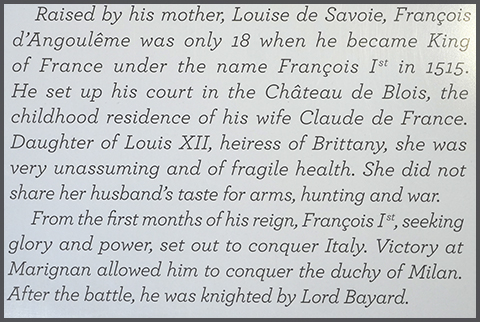
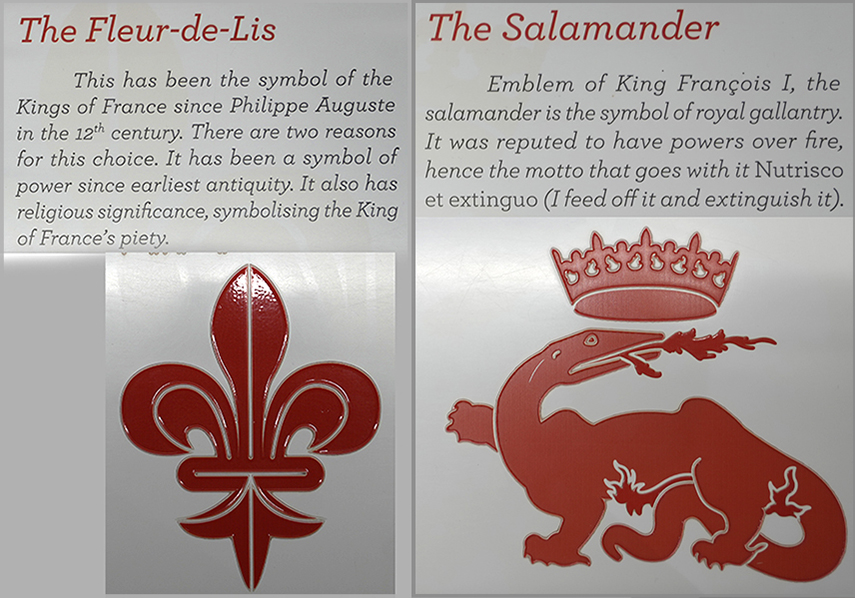
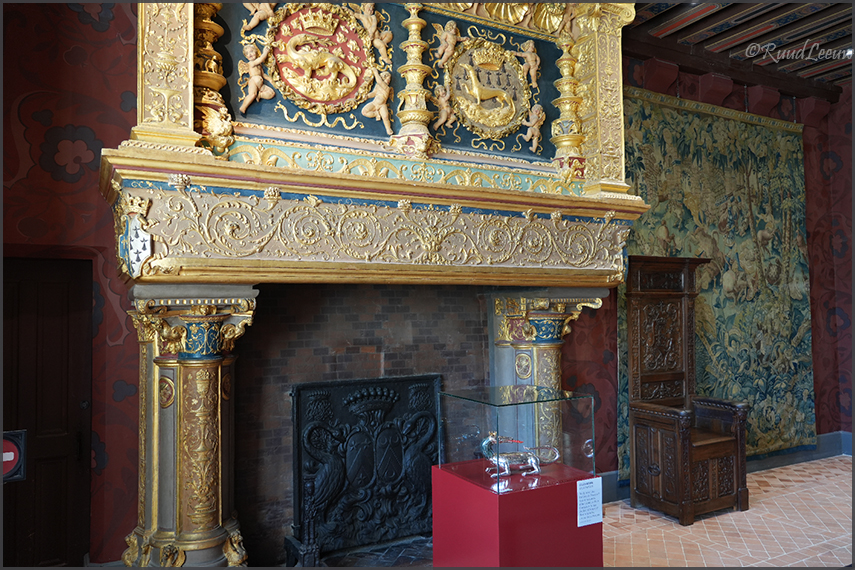
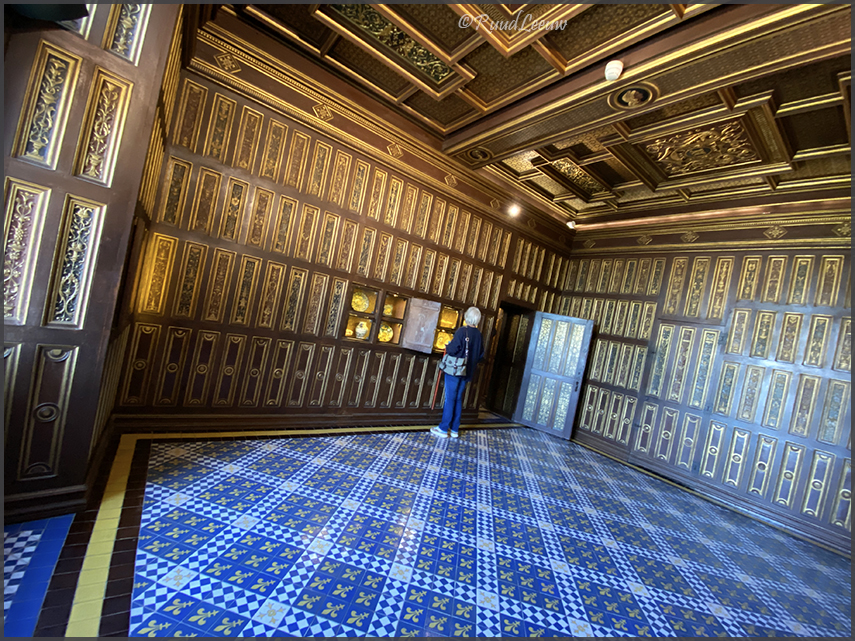
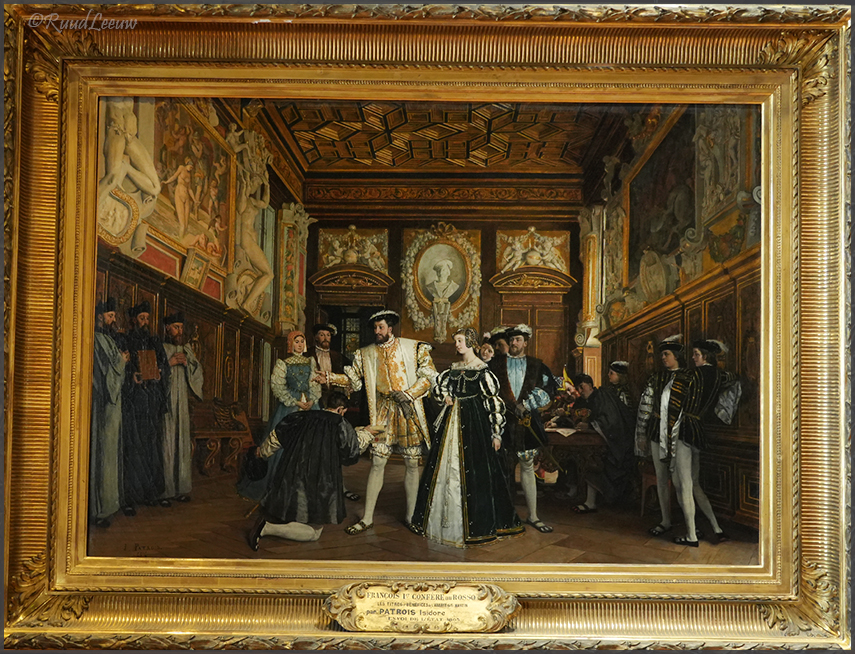
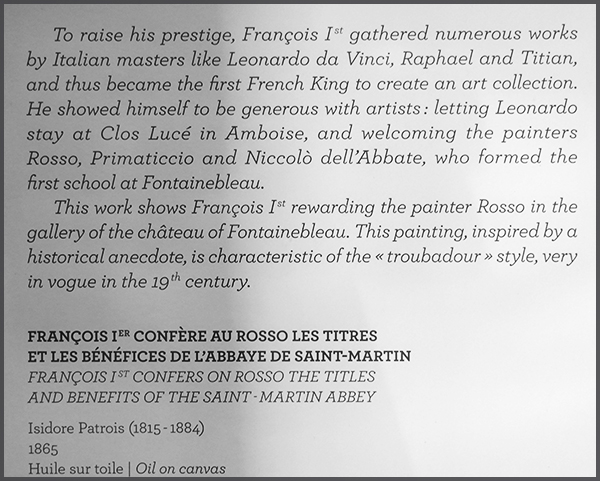
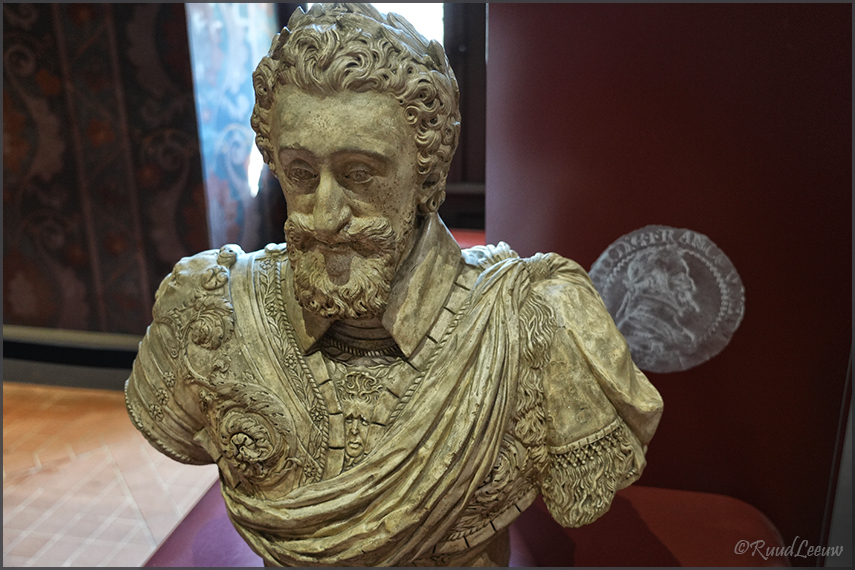
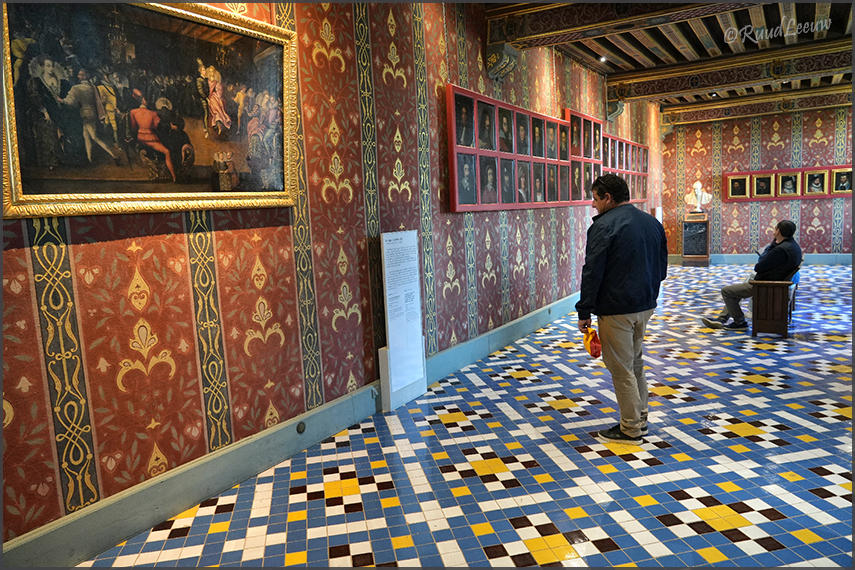
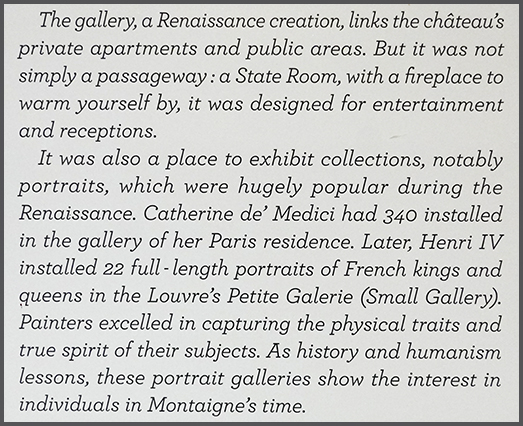
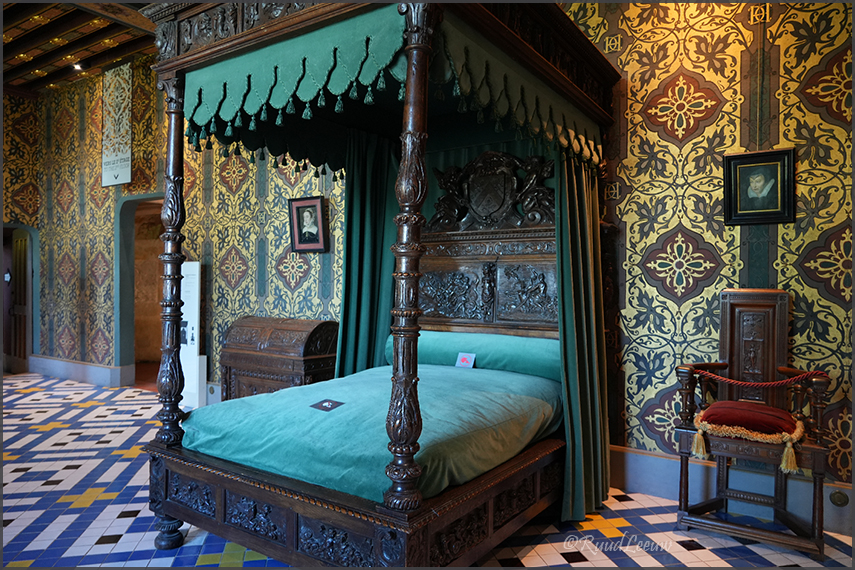
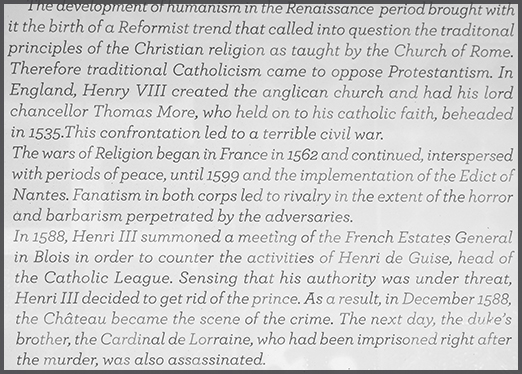
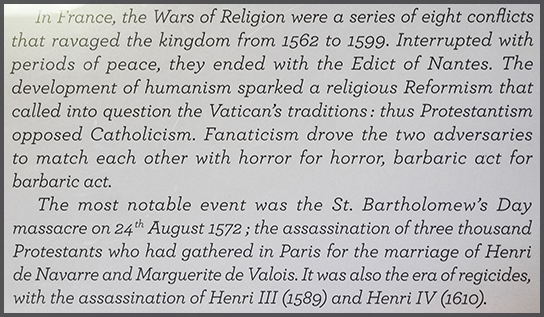
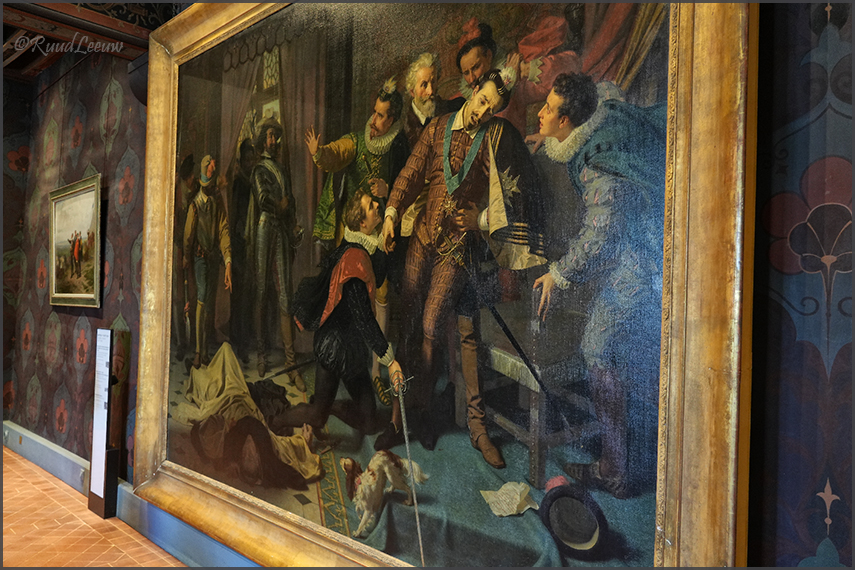
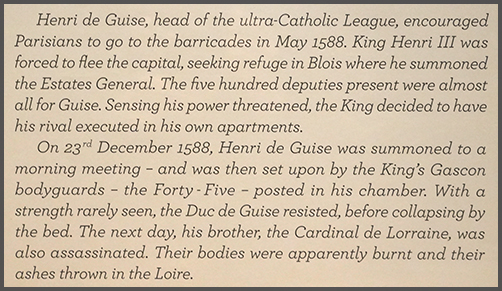
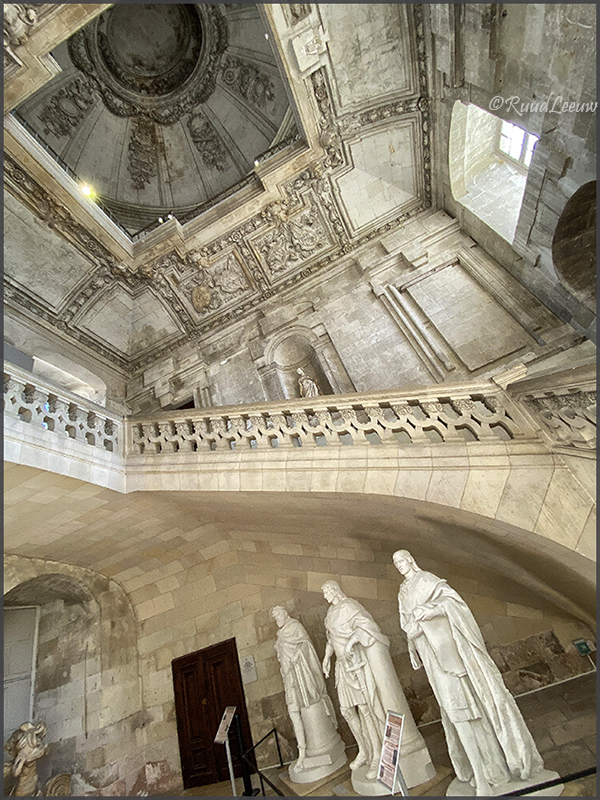
Across the courtyard this building had a fascinating view upward, but no access
on that staircase
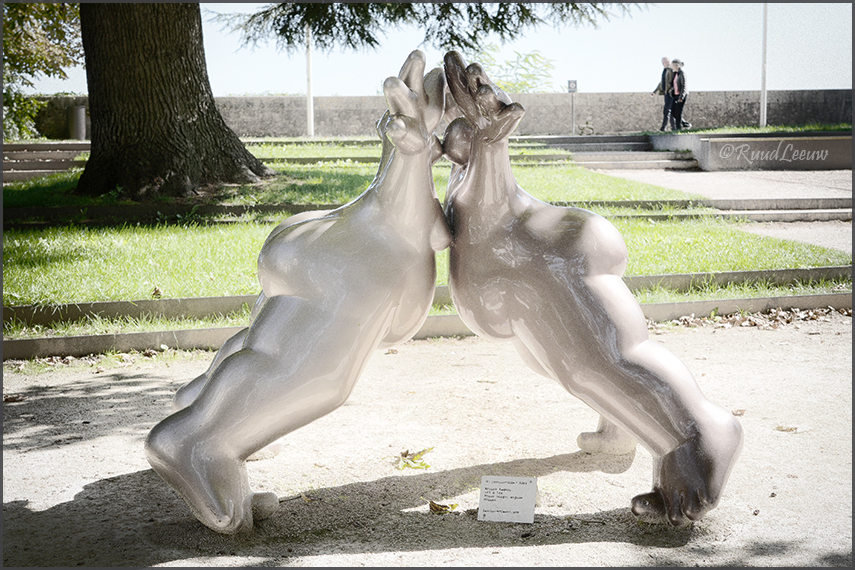
Art in the castle's garden, quite funny!
☺
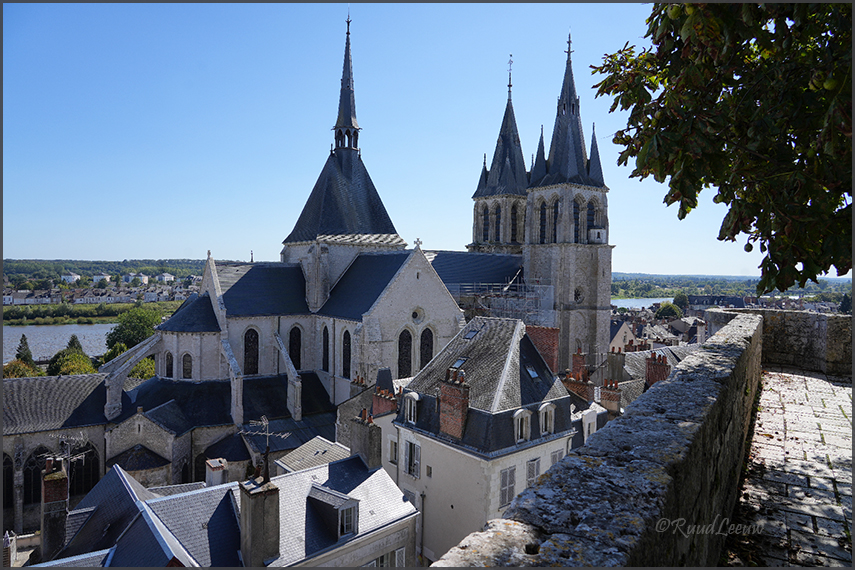
Fine view over the town and a bit of the river Loire can be seen.
|
 Photos © Ruud Leeuw
Photos © Ruud Leeuw

